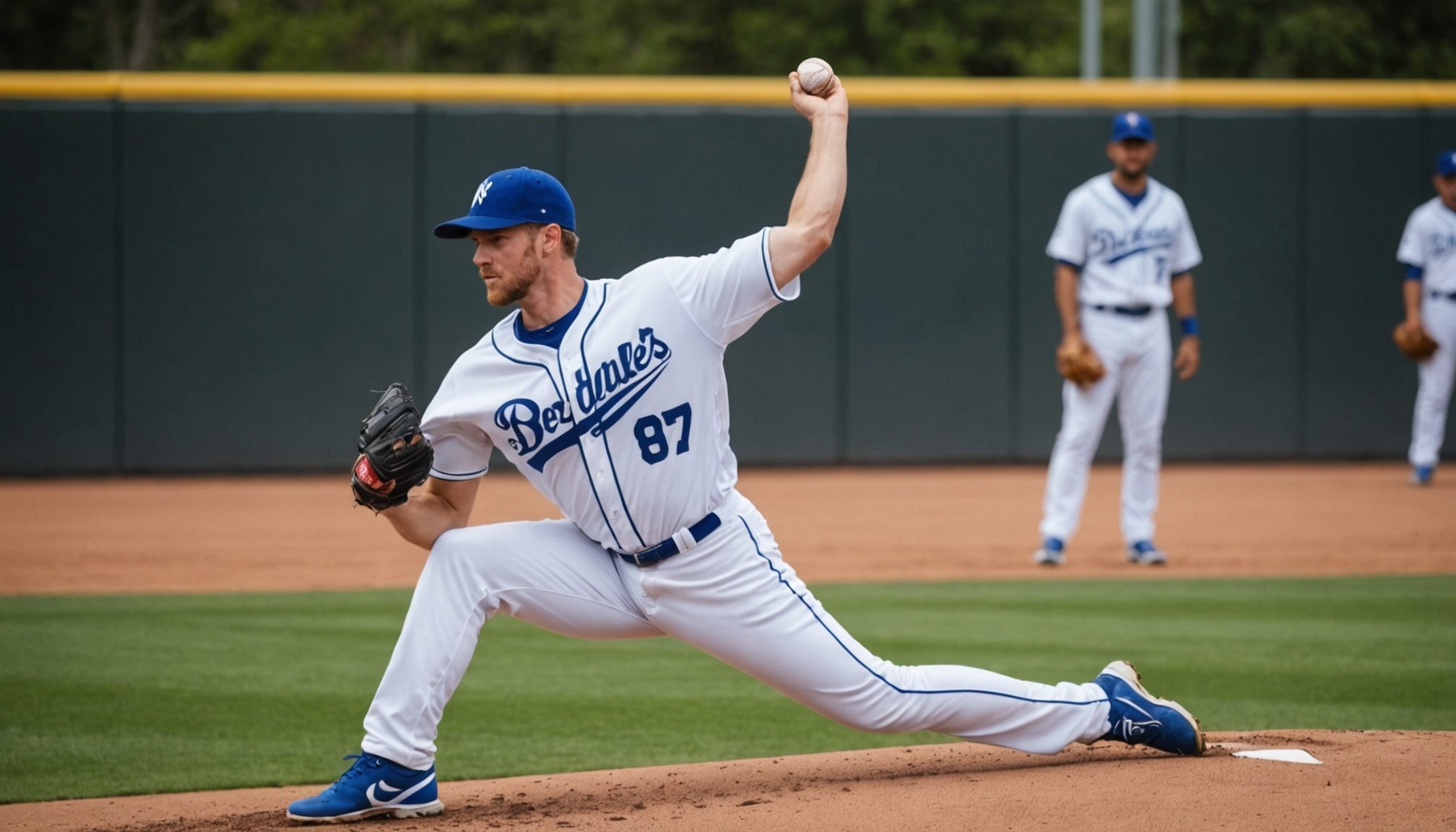Importance of a Pre-Game Warm-Up Routine
A well-planned warm-up routine is pivotal in preparing athletes both physically and mentally for optimal performance enhancement. Engaging in a variety of exercises before a game serves to heighten physical readiness by elevating the heart rate, increasing blood flow to major muscle groups, and boosting the efficiency of these muscles. This physiological preparation not only improves coordination and reaction times but also primes the body for peak exertion.
Beyond physical readiness, one of the primary warm-up benefits includes reducing the risk of injuries and strains. By gradually increasing the warmth and flexibility of muscles, tendons, and ligaments, athletes can decrease the likelihood of strains, sprains, and tears during high-intensity activities. This proactive injury prevention safeguards long-term athletic health and ensures consistent performance.
In the same genre : Transform your workout recovery with massage guns today !
Moreover, a focused warm-up routine carries significant psychological benefits. It offers athletes a structured opportunity to tune out distractions and concentrate on the game ahead, fostering a state of mental preparedness and confidence. This mental focus is just as vital in competitive sports, enabling sharper decision-making and resilience under pressure. The combination of these benefits underscores the necessity of a comprehensive warm-up as a vital component of any athlete’s preparation strategy.
Core Components of an Effective Warm-Up Routine
To maximise performance and prevent injuries, understanding the core components of an effective warm-up routine is crucial.
In parallel : Mastering resilience: essential strategies for athletes to overcome major setbacks in sports
General Warm-Up
A general warm-up is essential for increasing the heart rate. This increase enhances blood flow to muscles, providing them with oxygen and nutrients, which reduces injury risk. Engaging in suggested dynamic movements, such as jogging or arm circles, not only warms up muscles but also mentally prepares athletes for more intense activity. Its key elements should be structured and timed effectively, lasting around 5-10 minutes to ensure adequate preparation without exhaustion.
Specific Warm-Up for Pitchers
For pitchers, a specific warm-up targets shoulder and arm flexibility. These warm-up exercises might include band work or light tossing to prepare these critical areas. Incorporating sport-specific drills ensures that pitchers engage the same muscles they will use during the game, optimizing performance. The timing of these exercises is vital; they should be completed shortly before the game to maintain preparedness without fatigue.
Cool Down and Stretching
Post-activity, the cool down and stretching phase focuses on maintaining flexibility. Its importance lies in injury prevention and recovery enhancement. Recommended stretches for pitchers include shoulder and arm stretches. Performing these exercises right after finishing play is most beneficial, allowing the body to transition effectively from intense to resting states.
Essential Exercises for Warm-Up
When preparing for a game, incorporating a series of targeted exercises can significantly enhance your performance and reduce injury risks. Pitching drills aim to boost your form, while mobility exercises and stretching techniques ensure the body is ready for action.
Dynamic Stretching
Dynamic stretching plays a pivotal role in pre-game preparation, focusing on flexibility and movement. Begin with key dynamic stretches for shoulders, such as arm circles and cross-body stretches, to boost your range of motion. Effective leg mobility drills, like lunges with a twist, are essential to enhance agility and stability. Incorporating trunk rotation movements facilitates a full-body warm-up, ensuring every part of you is engaged and ready.
Resistance Band Exercises
Resistance bands are exceptional for targeting and strengthening specific muscle groups, including the rotator cuff muscles. Demonstrating key resistance band stretches, such as lateral pull-aparts or shoulder presses, effectively primes these critical areas. Integrating bands into your warm-up routine not only helps stabilise your shoulders but also enhances overall muscle endurance.
Ball Toss Drills
Arm activation is crucial, and ball toss drills are an excellent way to achieve this. Understanding the importance of these drills pre-game can help avoid common injuries. Techniques like underhand throws and progressive distance tosses cater to various skill levels, ensuring a comprehensive warm-up solution for every player.
Common Mistakes and Misconceptions
It’s not uncommon for athletes to skip the warm-up entirely, assuming their body will naturally adjust during the main workout. This misunderstanding often leads to inadequate performance and an increased risk of injury. Diving headfirst into intense activity might seem like a time-efficient choice, but it neglects crucial physiological prep.
Dynamic stretching is another area where athletes frequently falter. Many underestimate its significance, opting for static stretches instead. Unlike static stretching, dynamic stretching effectively enhances muscular performance and flexibility, reducing the risk of strains and sprains. Therefore, introducing movements that mimic your workout, such as leg swings or arm circles, is beneficial.
A widespread misconception exists around the belief that extending the warm-up duration over the usual 5 to 10 minutes brings added benefits. While a longer session might seem advantageous, it’s often counterproductive, leading to fatigue even before the main exercise begins. The warm-up should be concise and tailored to the specific workout, focusing on preparing key muscle groups and elevating the heart rate.
Understanding these warm-up pitfalls and learning from seasoned athlete experiences can help optimise performance. With the correct approach, you maximise not just efficiency but safety. Utilise these coaching insights, and approach each warm-up as an integral part of your fitness journey.
Psychological Aspects of Warming Up
Before any athlete can move their body efficiently, they must first engage in mental preparation. This mental readiness is crucial to achieving optimal performance during physical activities. It acts as a primer, setting the stage for the body to follow through with physical exertions effectively.
One of the essential elements in mental preparation is the use of focus techniques. Athletes often practice deep breathing, positive self-talk, and mindfulness to center their thoughts and energies. These techniques help eliminate distractions, allowing the athlete to direct their attention entirely toward their set goals. By fostering a calm yet alert mind, athletes can optimise their physical capabilities.
Visualization stands out as another powerful tool in an athlete’s mental arsenal. By vividly imagining the execution of skills or the completion of routines, athletes can mentally rehearse success before setting foot on the field or court. This mental imagery helps reinforce confidence and reduces anxiety, nurturing a mentally prepared state ready for high performance.
Coaches and sports psychologists routinely vouch for the importance of these psychological strategies. Many professionals highlight how mental training complements physical training, asserting that athletes often excel when they engage fully in focus techniques alongside physical warm-ups. They confirm that mental readiness sets apart truly exemplary performances.
Practical Tips for Timing and Duration
Understanding the optimal duration for different exercises can significantly enhance performance. For most athletes, a warm-up routine should last between 15 and 30 minutes. This timeframe allows muscles to prepare for the physical demands of the main event without exhausting energy reserves.
The scheduling of your warm-up is critical relative to the starting time of a game. Ideally, athletes should complete their warm-up no more than 10 minutes before the game begins. This ensures that muscles remain active and ready for play while minimizing the risk of injury.
Incorporating variable conditions into your warm-up scheduling is also crucial. For example, in colder weather, extending the duration slightly may be beneficial to ensure the body reaches the desired temperature. Conversely, during hotter conditions, focus on hydration and lighter movements to avoid overheating.
When considering routine duration, adapt strategies based on individual needs and environmental factors. Opt for dynamic stretches, gradually increasing intensity and ensuring the body is adequately prepared for the demands ahead.
By carefully timing and structuring your warm-up routine, you can improve performance, decrease injury likelihood, and contribute to overall success in sports and physical activities.
Real-World Examples and Athlete Testimonials
Exploring success stories in the world of sports can provide valuable insights and motivation. For instance, numerous case studies highlight the routines of successful pitchers. These athletes often attribute their achievements to regimented and well-planned training routines. They focus on areas like technique refinement, mental preparation, and physical conditioning to maintain peak performance.
Athletes aren’t the only ones contributing to these success stories. Coaches play a pivotal role in shaping effective strategies. Testimonials from seasoned coaches often emphasise the importance of specific warm-up strategies tailored to individual needs. Such routines include dynamic stretching, light cardiovascular exercises, and targeted preparation routines. These are not just protocols but essential building blocks for preventing injuries and enhancing performance.
Furthermore, expert opinions from trainers shed light on the significance of consistency. A consistent training regime is often cited as a crucial factor in an athlete’s progression. Trainers suggest that maintaining regularity not only builds stamina but also instills a sense of discipline. This consistency underpins the gradual enhancement of skills, ensuring continued improvement over time. Athletes and professionals alike agree that these practices can significantly influence an athlete’s career trajectory.











